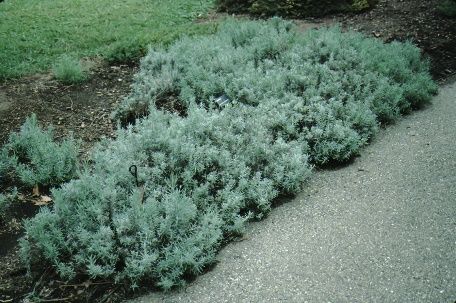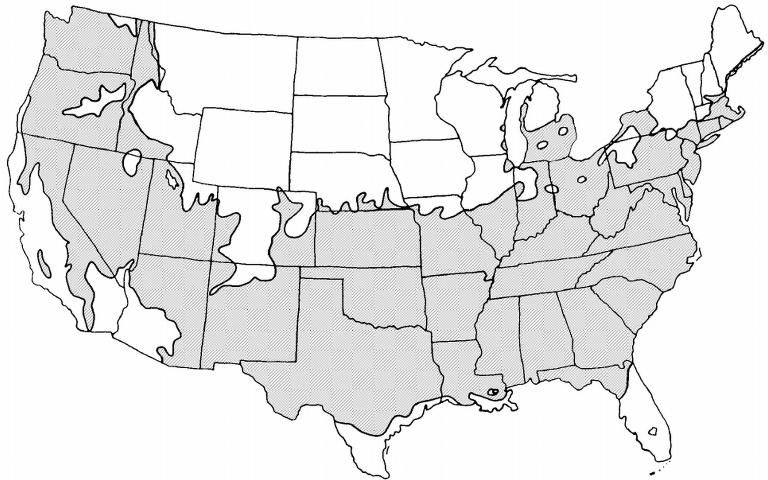Introduction
Lavender produces gray foliage and purple flowers, although cultivars with pink, blue, lavender, or white flowers also exist. Most plants are 2 to 3 feet tall, but some cultivars are shorter and more compact. Soft leaves are borne on erect, square, tomentose stems. The plant is a perennial in the northern part of its range but may decline in zone 8 due to the summer heat.

Credit: Edward F. Gilman, UF/IFAS
General Information
Scientific name: Lavandula angustifolia
Pronunciation: luh-VAN-dyoo-luh an-gus-tif-FOLE-ee-uh
Common name(s): lavender, English lavender
Family: Lamiaceae
Plant type: herbaceous; perennial
USDA hardiness zones: 5B through 8 (Figure 2)
Planting month for zone 7: year round
Planting month for zone 8: year round
Origin: not native to North America
Invasive potential: not known to be invasive
Uses: cut flowers; ground cover; mass planting; attracts butterflies
Availability: generally available in many areas within its hardiness range

Credit:
Description
Height: 1 to 3 feet
Spread: 2 to 3 feet
Plant habit: spreading
Plant density: moderate
Growth rate: slow
Texture: fine
Foliage
Leaf arrangement: whorled
Leaf type: simple
Leaf margin: entire
Leaf shape: oblong
Leaf venation: none, or difficult to see
Leaf type and persistence: deciduous
Leaf blade length: less than 2 inches
Leaf color: blue or blue-green
Fall color: no fall color change
Fall characteristic: not showy
Flower
Flower color: purple
Flower characteristic: pleasant fragrance; summer flowering
Fruit
Fruit shape: unknown
Fruit length: unknown
Fruit cover: unknown
Fruit color: unknown
Fruit characteristic: inconspicuous and not showy
Trunk and Branches
Trunk/bark/branches: not applicable
Current year stem/twig color: gray/silver
Current year stem/twig thickness: thin
Culture
Light requirement: plant grows in full sun
Soil tolerances: acidic; slightly alkaline; sand; loam; clay
Drought tolerance: unknown
Soil salt tolerances: unknown
Plant spacing: 24 to 36 inches
Other
Roots: not applicable
Winter interest: no special winter interest
Outstanding plant: plant has outstanding ornamental features and could be planted more
Pest resistance: long-term health usually not affected by pests
Use and Management
The plants grow best in a sunny location in a dry, somewhat infertile soil. Protect the crowns with several inches of mulch during the winter. Plants are more susceptible to winter injury when grown in wet, heavy soil.
Lavenders are widely grown as ornamentals; they are tidy, low-maintenance plants that serve well as borders, knots, in rock gardens, and with roses. They are very sensitive to pH, which should be kept above 6. They can be pruned in early spring.
The oil of lavender is a mainstay in perfumery, and the fragrance is widely used in soaps and cosmetics. Flowers for drying must be harvested before opening. They can then be bound together into aromatic and decorative wands, or incorporated in potpourris or sachets.
Cultivars include: ‘Backhouse Purple’, ‘Bowles Early’, ‘Folgate’, ‘Gwendolyn Anley’, ‘Hidcote’, ‘Irene Doyle’, ‘Lodden Blue’, ‘Mitcham Grey’, ‘Munstead’, ‘Rosea’, ‘Summerland Supreme’, and ‘Twickel Purple’. The cultivar names more or less describe the flower color.
Pests and Diseases
Leaves infected with leaf spot can be picked off.